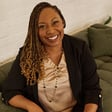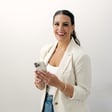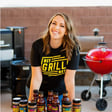
Episode 160: Quick Website Fixes to Uplevel Your Website
So earlier this summer, we started offering Designers Touch Sessions.
If you've ever seen a woman walk over to her husband and adjust his tie a little bit so it sits a little bit straighter or watched the maid of honor fluff a bride’s dress just before she walks down the aisle so it lays perfectly while she walks, that's what these sessions are designed to do.
Basically, these are 90 minute sessions where our team jumps into a website and gets it to the next level.
As our team was working on these site cleanups, we noticed a few common design "mistakes" on many of the sites. We use mistakes in quotes because while these elements aren't necessarily awful, they could inadvertently make it more difficult for visitors to buy/book/decide to work with you.
So just what are these mistakes and how can you fix them?
In June, we released a few spots and they sold out QUICKLY. We'll likely open up a few more spots again soon. Learn more about DT Sessions + grab a waitlist spot: https://daveyandkrista.com/designers-touch/
Episode blog + show notes: https://daveyandkrista.com/website-fixes-uplevel-website/
















